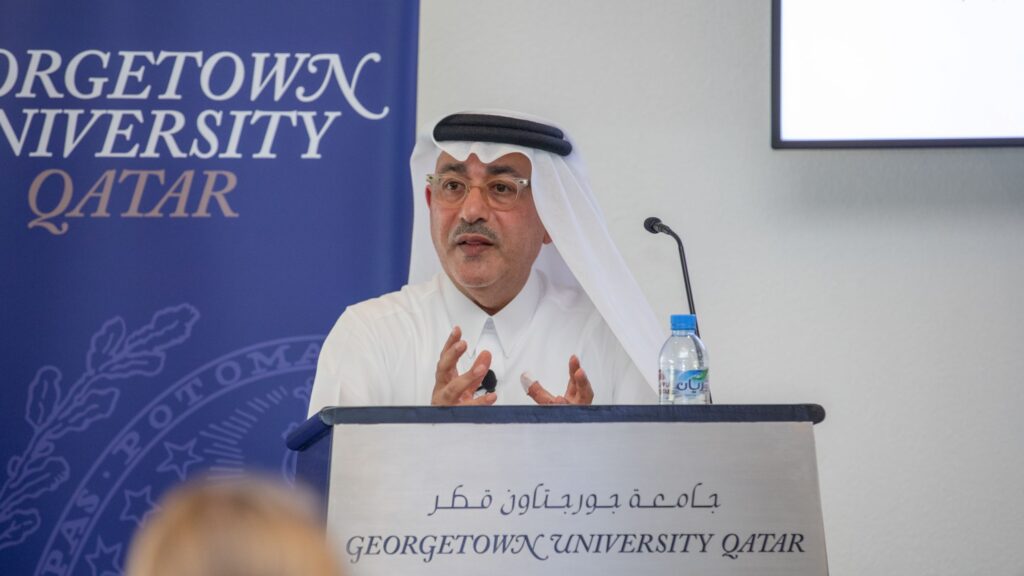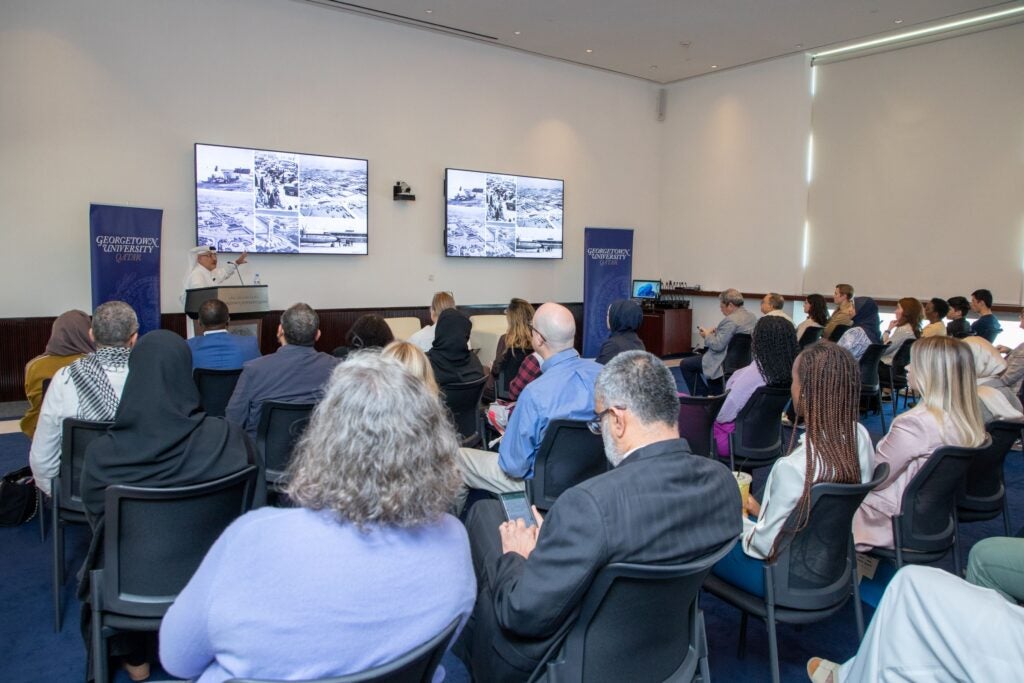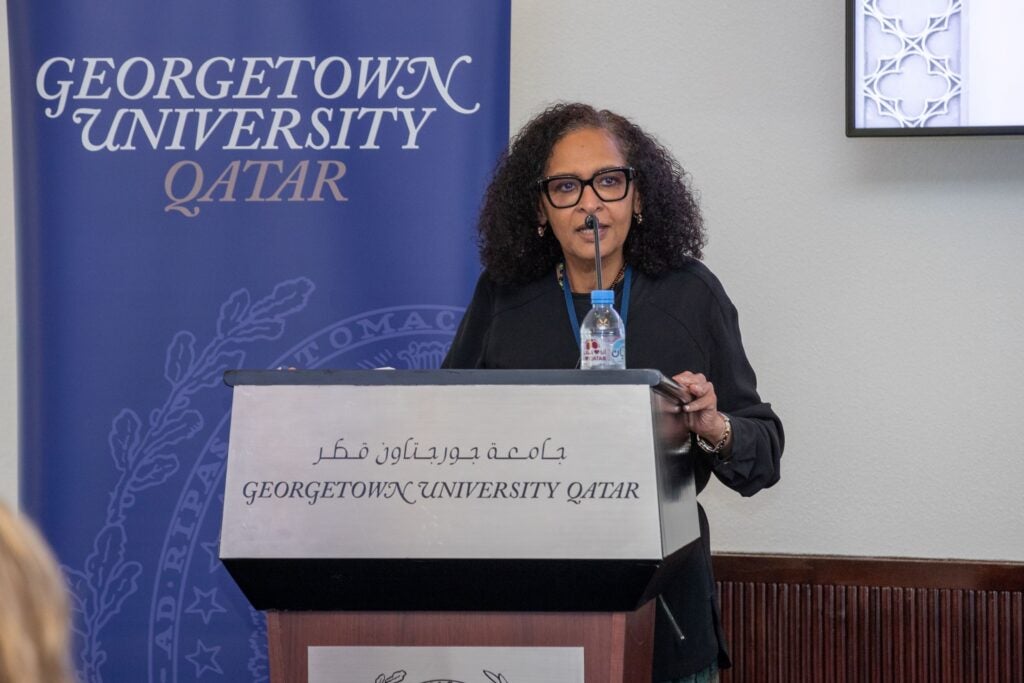Qatar’s Early Modern Period Shows Unique Arabian Deco Style, Says Architect Jaidah at Community Book Talk

As the skyline of Doha continues to expand with designs that reflect its unique heritage and forward-looking ambitions, the Indian Ocean Working Group at GU-Q invited award-winning author and architect Ibrahim M. Jaidah to present a lecture on Qatar’s early modern architecture.
The public event focused on the author’s recent publication, “Discovering Arabian Deco: Early Modern Architecture in Qatar,” and featured a rich discussion on the transformative urban development of Qatar from the 1950s to the 1970s, following the discovery of oil.
The History of Qatar Through Architecture
Jaidah, who is the Group CEO and Chief Architect of the Arab Engineering Bureau, highlighted the photographs and artistic renderings of building details from his book which explores a golden era of Qatar’s development, a time marked by newfound oil wealth and rapid urbanization. His expert insights shed light on the history of iconic buildings and places around Doha from the first clock tower announcing Qatar’s arrival into the modern era, to the elaborate gates of courtyard homes which showcase an Arab art deco style unique to the region.
Arabian Art Deco Style
Jaidah’s presentation included a variety of photographs depicting elaborate gates and buildings in Qatar developed during the early modern period with strong Art Deco-style references with the inclusion of cultural symbols such as the palm tree and the eagle, saying, “We know about the deco movement that was thriving in the ‘30s in France and New York and Miami…but here the deco included the palm tree and the eagle, things that belong to the region, and I call this Arabian Deco.”
He also discussed the never-before-seen photographs, drawings, and buildings from his private collection and the Arab Engineering Bureau (AEB) archives that accompany the stories in his book, and shared his growing collection of building renderings, photographs, and 3-D models preserving Qatar’s architectural history. It is part of a larger project to share his love for Qatar’s architecture with future generations.

“To make this fun, I started to use the drawings of the buildings to create art pieces to promote this early modern period, whether it was to create postcards or posters to invite people to discover the beauty that these building had… to get the younger generation, and the visitors, to buy in that this is a unique style of architecture,” he explained.
A Long History of Engagement with GU-Q
The session was moderated by Dr. Rogaia Abusharaf, Professor of Anthropology at GU-Q and co-founder of the Indian Ocean Working Group, who traced Jaidah’s history of support for higher education in Qatar, including speaking to students, and working with professors, including herself, on various historical and cultural research projects.

Jaidah’s architectural philosophy is reflected in his company’s contributions to the country’s skyline. His work celebrates the past while constructing a sustainable future, a vision underscored in his co-founding of the Qatar Green Building Council.
About the Indian Ocean Working Group
Formed in 2014, the Indian Ocean Working Group (IOWG) at GU-Q convenes researchers from across the world to build collaborative expertise across the boundaries of traditional area studies to remap the Indian Ocean World through historical circularities of people, culture, knowledge, ideas, commodities, technology, architecture, labor, and capital.